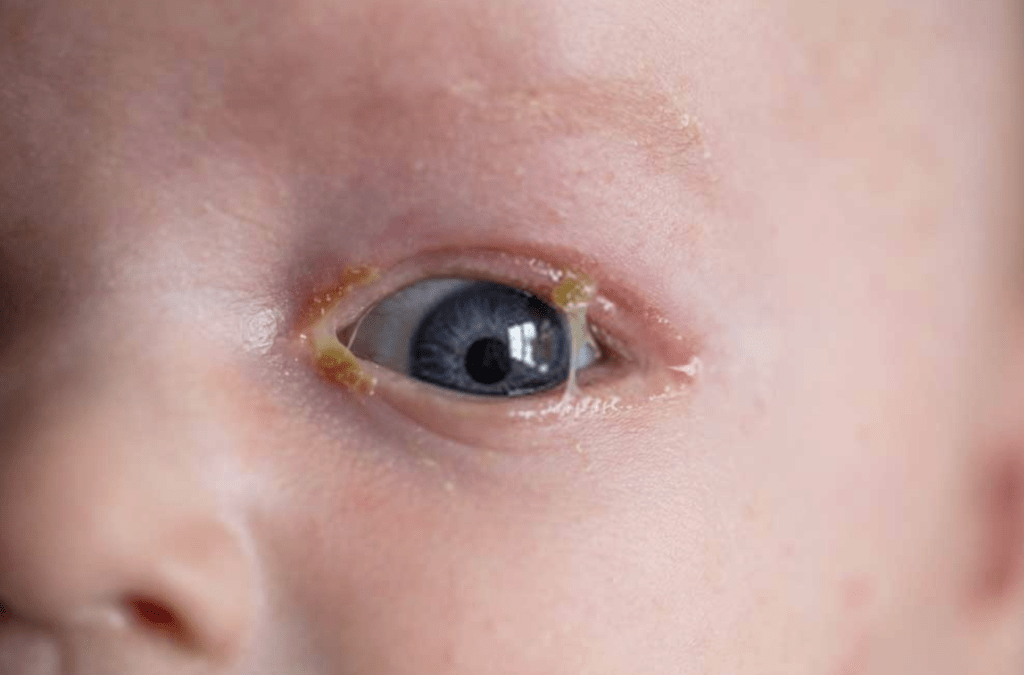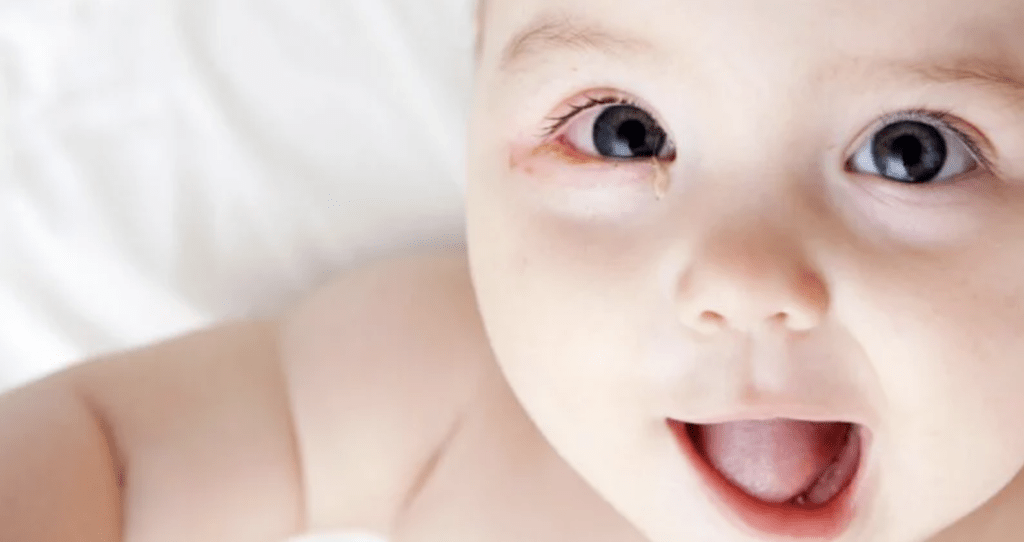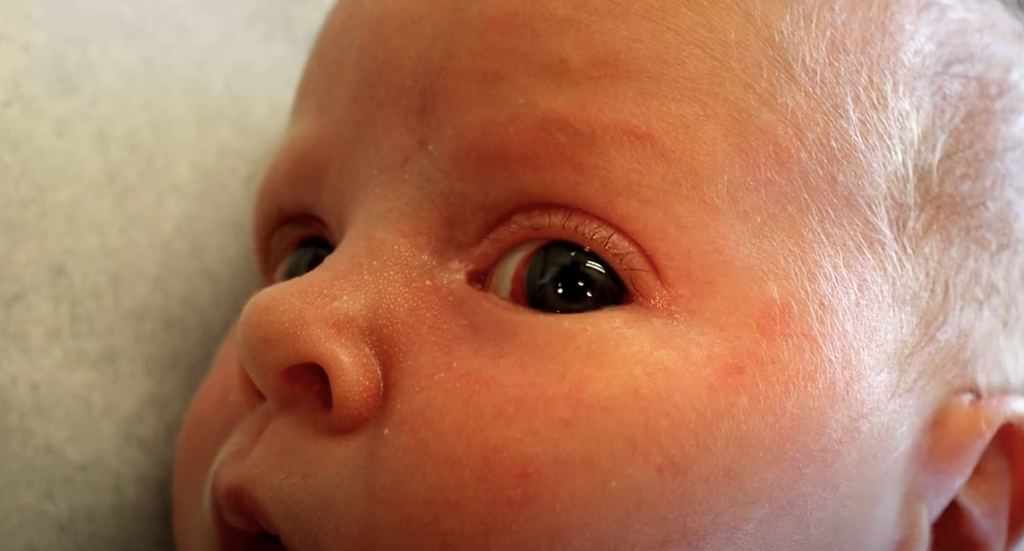Blocked Tear Duct (Nasolacrimal duct obstruction)
Thick, yellowish-green discharge from an obstructed tear duct is often not serious, with most healing on their own. They can occur multiple times in a newborn, but do not often lead to serious problems.
Signs & Symptoms
- Red or swollen eyelids
- Yellowish-green discharge or watering of the eye
- Eyelids stuck together by discharge
Treatment
- Gently wipe the discharge with a warm washcloth to clear the discharge from the eye
- No soap!
If the eye itself appears red or swollen, contact your doctor, as there may be an infection and not a clogged duct. If the condition reoccurs frequently, contact your pediatrician, as there may be an underlying cause.

“Pinkeye” (Conjunctivitis)
An eye infection is characterized by the white part of the eye and lower eyelid becoming red and irritated, with eye discharge. This can occur if the newborn was not given antibiotic drops after birth, as natural bacteria found in the birth canal can cause the infection. The cause is often from a bacteria or virus, which are contagious, so proper handwashing is key to preventing spread.
Signs & Symptoms
- Eye discharge
- Can be green, yellow, white or cloudy, or clear
- Red white portion (sclera) of eye
- Red and swollen or irritated lower eyelid
- Often wiping eye with above signs
Treatment
- Antibiotic drops or ointments
If your newborn has a red and irritated “white of the eye”, red and swollen lower eyelid, and eye discharge, contact your pediatrician.


Cross Eye (strabismus, “lazy eye”)
Eye alignment issues are a relatively common condition in children, affecting up to 5 percent. It is caused by problems with the muscles or nerves that control the eye, and can be present all of the time (constant) or some of the time (intermittent).
Symptoms
- One or both eyes appear to be turned instead of straight ahead, or not in line with the other eye
- Both eyes can be turned inward (crossed eyes, strabismus) or outward (walleyes, extropia)
- Eyes do not appear to move together
- Frequent blinking or squinting
- Tilting the head to look at things
- Favoring the eye that appears to be in normal alignment
- Poor depth perception
Treatment
- Varies depending on type of alignment issue and cause
- Glasses, eye patch, or eye drops are common treatments
- Used to strengthen the weak eye
- Eye drops temporarily blur the stronger eye, forcing the baby to use the weaker eye
- Less often, surgery can be used to realign the eyes.
Early detection is crucial to improving your baby’s vision. The sooner the condition is detected, the less likely permanent vision


Subconjunctival hemorrhage
A small red area or dot in the white of your baby’s eye is usually a common, benign condition caused by the birthing process. Pressure exerted during labor may cause the small blood vessels in the eye to burst, causing a small pooling of blood.
Symptoms
- Red patch on the white (sclera) of the eye
- There is no pain associated with it
Treatment
- No treatment is required
- The blood will normally disappear in a week or two
If you notice drops of blood or the red area is expanding, contact your pediatrician, as this may be a sign of a different and possibly serious condition.




